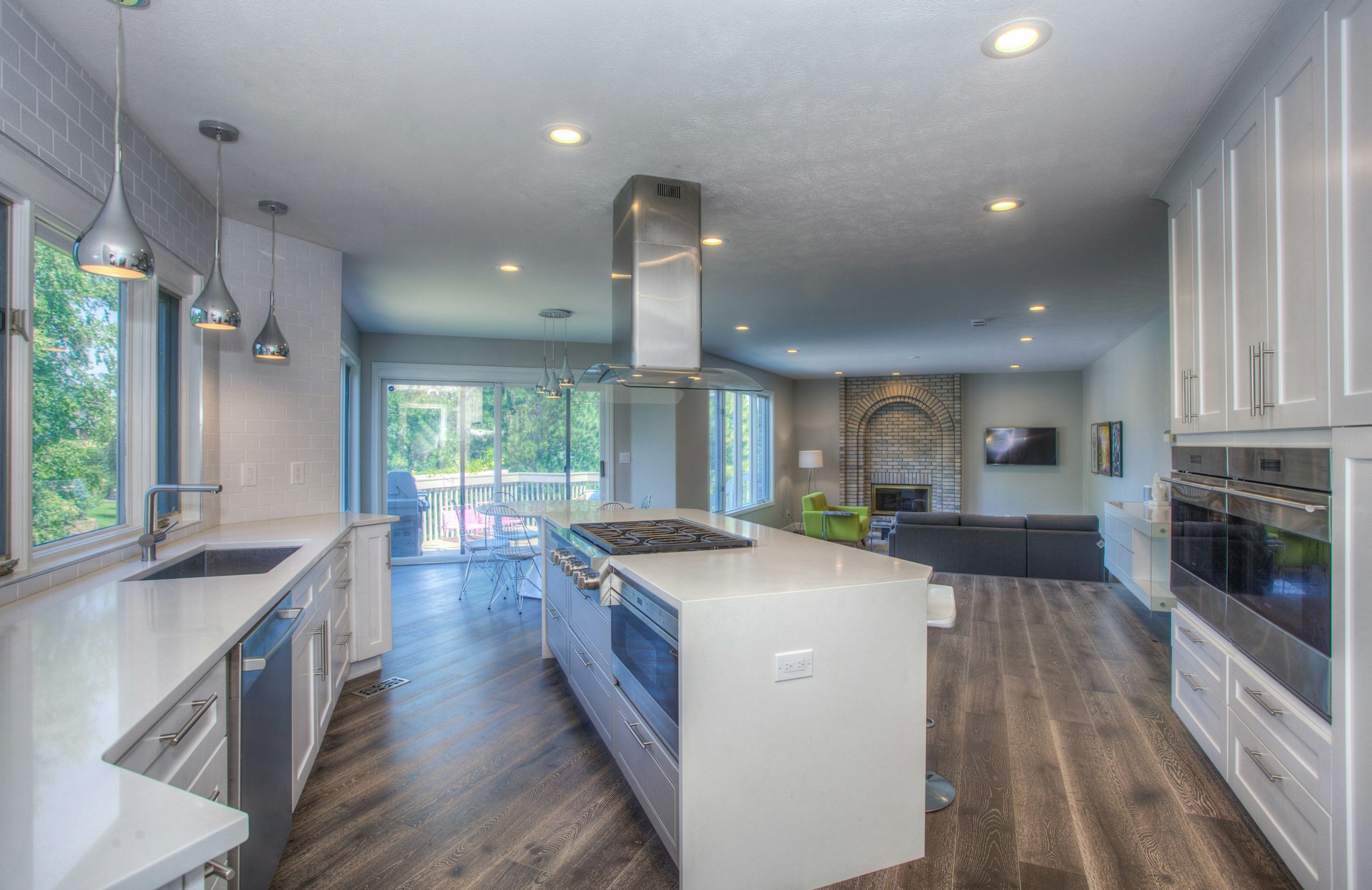
A kitchen remodel is one of the most popular home improvement projects, and for good reason. It can dramatically improve the functionality of your space, increase your home’s value, and create a beautiful environment for cooking and gathering.
However, a successful kitchen renovation requires careful planning and execution. Without a clear strategy, it’s easy to go over budget, face unexpected delays, and end up with a design that doesn’t quite meet your needs.
This guide will walk you through the essential steps to plan a successful kitchen remodel. By following these remodeling tips, you can navigate the process with confidence, ensuring your project stays on track and delivers the results you envision.
From setting a realistic budget to choosing the right materials, we’ll cover everything you need to know to create the kitchen of your dreams.
1. Define Your Goals and Vision
Before you start tearing down cabinets, it’s crucial to have a clear vision for your new kitchen. Think about what you want to achieve with this renovation.
- Identify Pain Points: What isn’t working in your current kitchen? Is it a lack of counter space, outdated appliances, poor lighting, or an inefficient layout? Make a list of all the things you want to change.
- Determine Your Needs: How do you use your kitchen? Are you an avid cook who needs professional-grade appliances? Do you entertain often and need a large island for guests to gather? Or is your kitchen primarily a family hub for homework and casual meals?
- Gather Inspiration: Create a mood board with images from magazines, Pinterest, or design websites. This will help you define your desired style—whether it’s modern, traditional, or farmhouse—and communicate your vision to your contractor.
2. Set a Realistic Budget
Your budget will guide every decision you make during the kitchen remodel, from the materials you choose to the contractor you hire.
- Research Costs: The cost of a kitchen renovation can vary widely. Research average costs for projects similar to yours. If you’re planning a kitchen remodel Ocala, for example, local material and labor costs will influence your total spending.
- Allocate Funds: Break down your budget into categories. A common rule of thumb is to allocate funds as follows:
- Cabinetry and Hardware: 30%
- Labor and Installation: 20%
- Appliances: 15%
- Countertops: 10%
- Flooring: 7%
- Lighting and Electrical: 5%
- Plumbing and Fixtures: 5%
- Other (paint, windows, etc.): 3%
- Include a Contingency Fund: Always set aside an extra 10-20% of your total budget for unexpected expenses. Issues like hidden water damage or electrical problems can arise once demolition begins, and having a contingency fund will prevent these surprises from derailing your project.
3. Choose a Layout That Works for You
The layout is the foundation of a functional kitchen. While it might be tempting to completely overhaul the existing footprint, consider whether small adjustments could achieve your goals more affordably.
- The Kitchen Work Triangle: This classic design principle connects the three main work areas: the sink, the refrigerator, and the stove. An efficient layout minimizes traffic between these zones.
- Common Kitchen Layouts:
- Galley: Ideal for smaller spaces, this layout features two parallel walls with a walkway in between.
- L-Shape: This versatile layout uses two adjacent walls, creating an open feel and space for a dining area.
- U-Shape: Offering ample counter and storage space, this layout uses three walls. It’s great for larger kitchens.
- Island: An island can add valuable workspace, storage, and seating, making it a popular feature in open-plan homes.
4. Hire the Right Professionals
Unless you have extensive experience in construction and design, you’ll likely need to hire professionals. The right team can make your kitchen renovation a smooth and stress-free experience.
- General Contractor: A general contractor will oversee the entire project, manage subcontractors (like plumbers and electricians), and ensure the project stays on schedule and on budget.
- Kitchen Designer: A designer can help you create a functional layout, choose materials, and bring your aesthetic vision to life.
- Architect: If your remodel involves structural changes, like moving walls or adding windows, you may need an architect to draw up the plans.
When hiring, be sure to check references, view past projects, and get detailed written estimates.
5. Select Materials and Appliances
This is often the most exciting part of the remodeling process. Your choices will define the look and feel of your new kitchen.
- Cabinetry: Cabinets are a major investment. Options range from stock cabinets, which are the most affordable, to semi-custom and fully custom cabinets that offer more flexibility in style and size.
- Countertops: Popular materials include granite, quartz, marble, and butcher block. Consider durability, maintenance requirements, and cost when making your selection.
- Appliances: Choose appliances early in the planning process, as their dimensions will affect your cabinet and layout design. Look for energy-efficient models that fit your cooking habits and budget.
- Flooring: Kitchen flooring needs to be durable and water-resistant. Tile, hardwood, and luxury vinyl are all excellent choices.
6. Create a Detailed Project Plan
A comprehensive plan is your roadmap to a successful remodel. It should outline every phase of the project and establish a clear timeline.
- Sequence of Events: A typical kitchen remodel follows this order:
- Demolition and tear-out
- Structural changes and rough-in work (plumbing, electrical)
- Drywall and painting
- Flooring installation
- Cabinet installation
- Countertop and backsplash installation
- Appliance and fixture installation
- Final touches (lighting, hardware)
- Establish a Timeline: Work with your contractor to create a realistic timeline. Be prepared for potential delays, but having a schedule helps keep everyone on track.
Start Your Home Improvement Journey
Planning a successful kitchen remodel is about making informed decisions at every stage. By defining your goals, setting a realistic budget, and hiring the right team, you can create a beautiful and functional space that you’ll love for years to come.
This home improvement project is an investment in your home and your quality of life. Ready to take the next step? Contact a local design and build expert to discuss your vision and get professional guidance. A well-planned kitchen renovation will not only enhance your daily life but also add significant value to your home.

